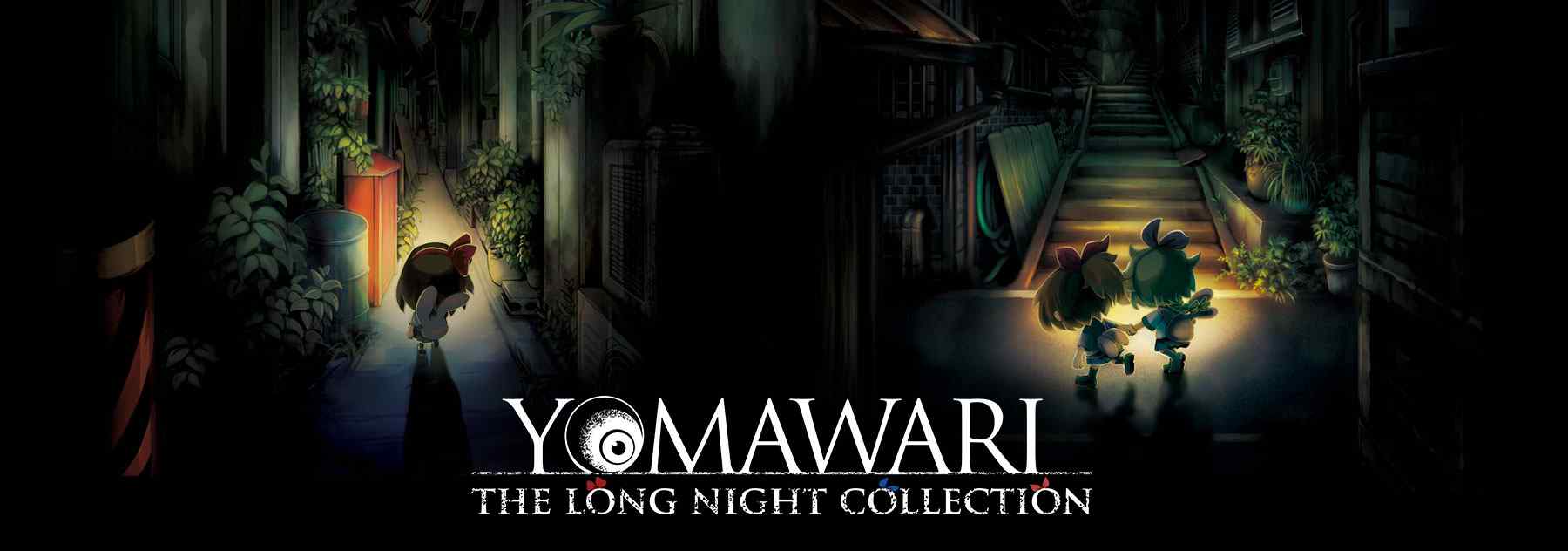Yomawari: The Long Night Collection
Reviewed by Shaun (@reviewsbyhughes)
Developer: Nippon Ichi Software, Inc
Publisher: Nippon Ichi Software (NIS) America
Category: Adventure, Action, Puzzle, Other
Release Date: 30.11.2018
Shock, Horror.
A survival horror experience first released in Japan in 2015, Yomawari was developed and published by NIS America (Nippon Ichi Software, Inc.) After a subsequent sequel was released on PS4, PS Vita and Steam in 2017, entitled Yomawari: Midnight Shadows, NIS America turned their attention to the Nintendo Switch. Releasing as a bundle with the original, Yomawari: Night Alone, and the aforementioned sequel ‘Midnight Shadows’, I took the opportunity to explore just what it is that NIS America has offered up this time. With God Wars, Disgaea 5 and Ys VIII: Lacrimosa of Dana just a few names from the outstanding back catalogue of NIS, it has a lot to live up to.
It is important to note that when I loaded the title for the first time, I had no idea what Yomawari entailed. Although the games name, ‘The Long Night Collection’, gave me some indication, I had ensured that I had not researched the title before delving in. All too often we can have a preconceived idea of what a game will play like and I wanted to approach this one with all cards on the table. I am so, so glad I did. Within the first five minutes, I was sat wide-eyed and speechless after what had unfolded. I am not one for spoilers, and for this I won’t explain what happened, but it is safe to say that the picturesque scene below is not how it ended.
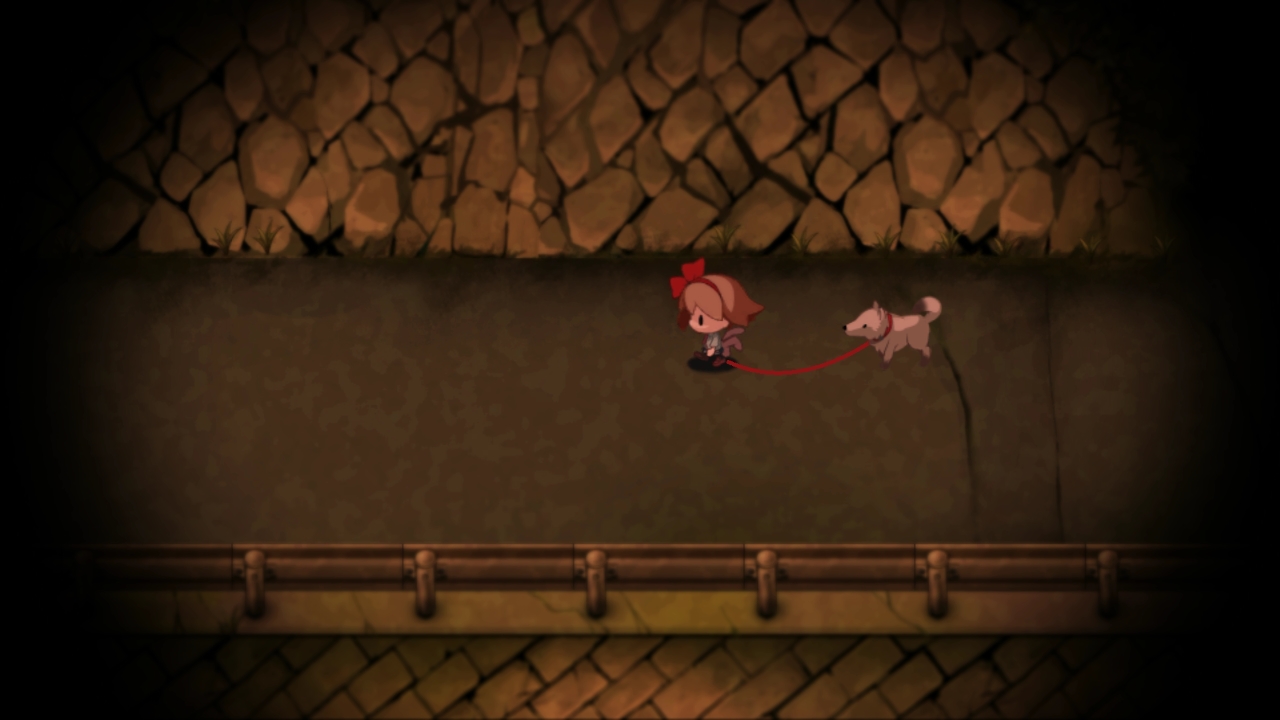
The Earth has music for those who listen
I began with the ‘Night Alone’ pack so as to play the two in order, and what was apparent from the off is just how eerie and desolate the place is. With no soundtrack to the game, the story is told through on-screen prompts and tense audio. It is rare that a game approaches sound in this way, however it has been used to great effect. I found that music wasn’t missing from the gameplay and that is a credit to how well the developers have crafted the inclusion of natural, or sometimes supernatural, sounds!
As I walked around the beautiful town with side streets and back alleys, all dimly lit with well-placed street lighting, I was in awe of what had been created. The scenery was inviting, with a certain warmth to the environment, which very intelligently juxtaposes the survival horror elements. I was equally as excited to get back into the game as I was worried about what I may encounter.
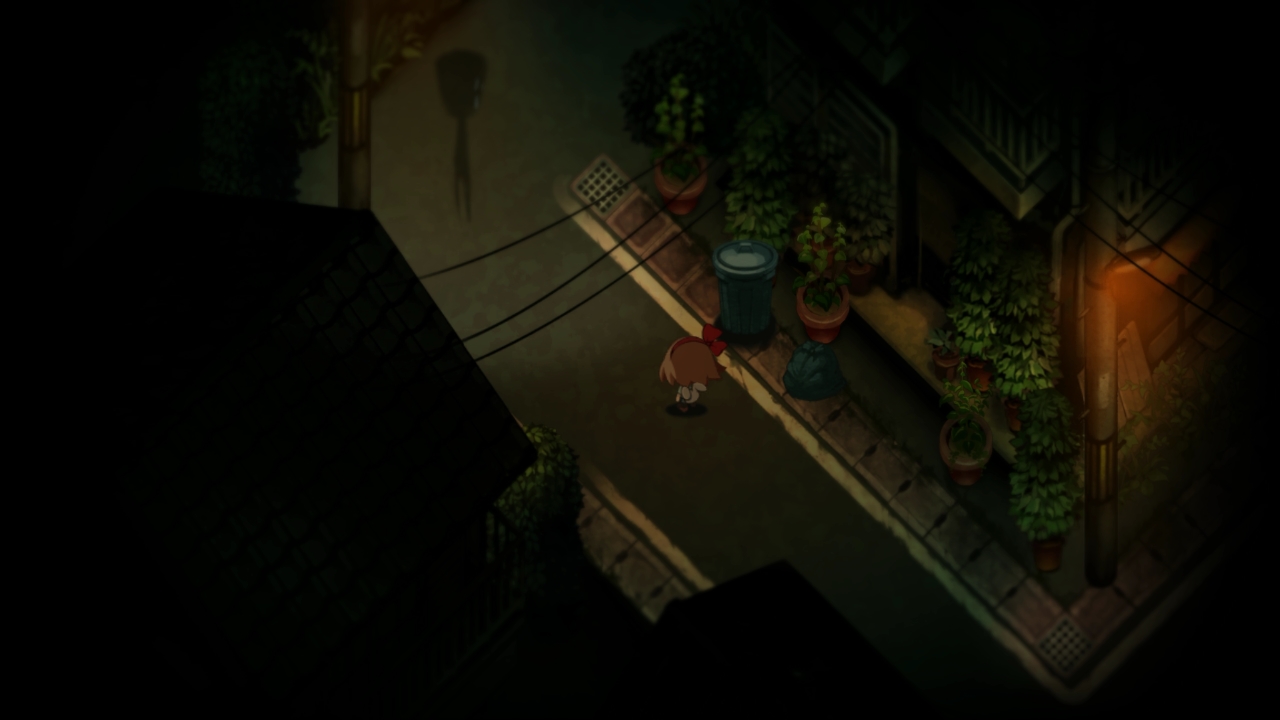
Brief encounters
Armed only with a flashlight and a shovel – if you happen to find one – you go out in the dead of night in search of a certain furry animal and your elder sister. Both have gone missing, with the sister disappearing whilst looking for Poro, the dog. The flashlight serves as not only a guide to light the way but also to identify the mysterious and quite frankly bizarre monsters which have plagued the town. It is rare that you see these in advance, with the monsters only appearing when you get particularly close. When this occurs, a system that has been developed to replicate your heartbeat informs you through a quickening beat that you are getting ever closer to impending doom. A quick getaway is required and hiding in a nearby bush or running elsewhere having observed the monsters movements will do the trick.
Each monster has its own features, from appearance to movement and noise. Some move quickly and can quite easily catch you off guard, just as some are slow and cumbersome but take up a large amount of space on screen. Both make it difficult to evade the enemies and can leave you returning to your most recent checkpoint, activated by presenting a coin to a statue as a peace offering. These are found regularly enough to be useful, however they only serve as a checkpoint for the duration of that particular game session. If the game is turned off before the particular stage is complete, you will need to restart. Although I can see the perks to this, it is not something I particularly appreciate, especially when gaming time is limited for some due to other commitments.
Advertised as an action, adventure puzzler, there are a number of elements to the gameplay of Yomawari. It relies heavily on the players’ ability to problem solve, with a number of different puzzlers presented to you during the playthrough which require careful planning and observation in order to complete. These offer enough challenge to keep gamers engaged without detracting from the narrative or players becoming unstuck.
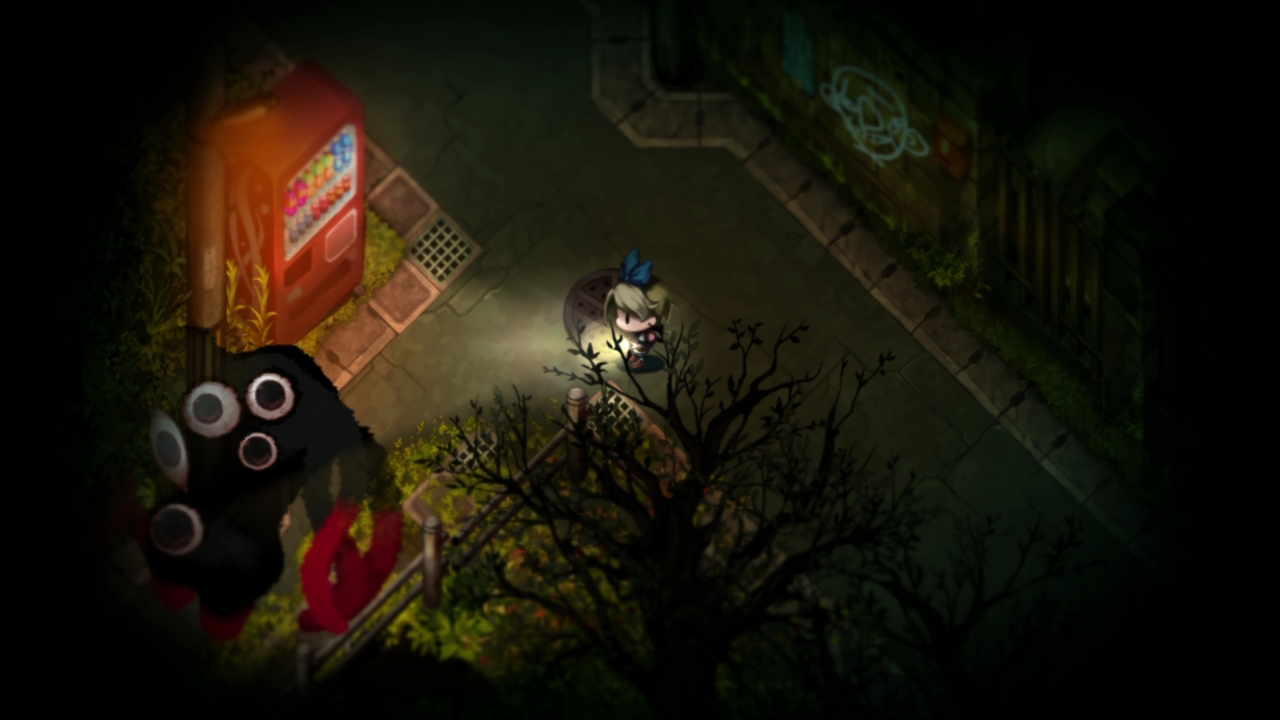
In my restless dreams, I see that town…
Having been developed using a cartoon art-style, it is difficult at first to see a comparison. For me, however, I feel the game shares a slight resemblance with the Silent Hill series. Although nowhere near as scary, the in-game map and feel of the town shared some similarities that I thoroughly enjoyed. I am not normally one to play a survival horror as I tend to prefer having a weapon drawn and combat on the horizon, however Yomawari never made me feel like this was necessary. I did, however, feel that the game has the potential to be repetitive for some and although it is engaging and interesting for the most part, there is still an overarching feeling that you have done it all before – especially when you try the sequel.
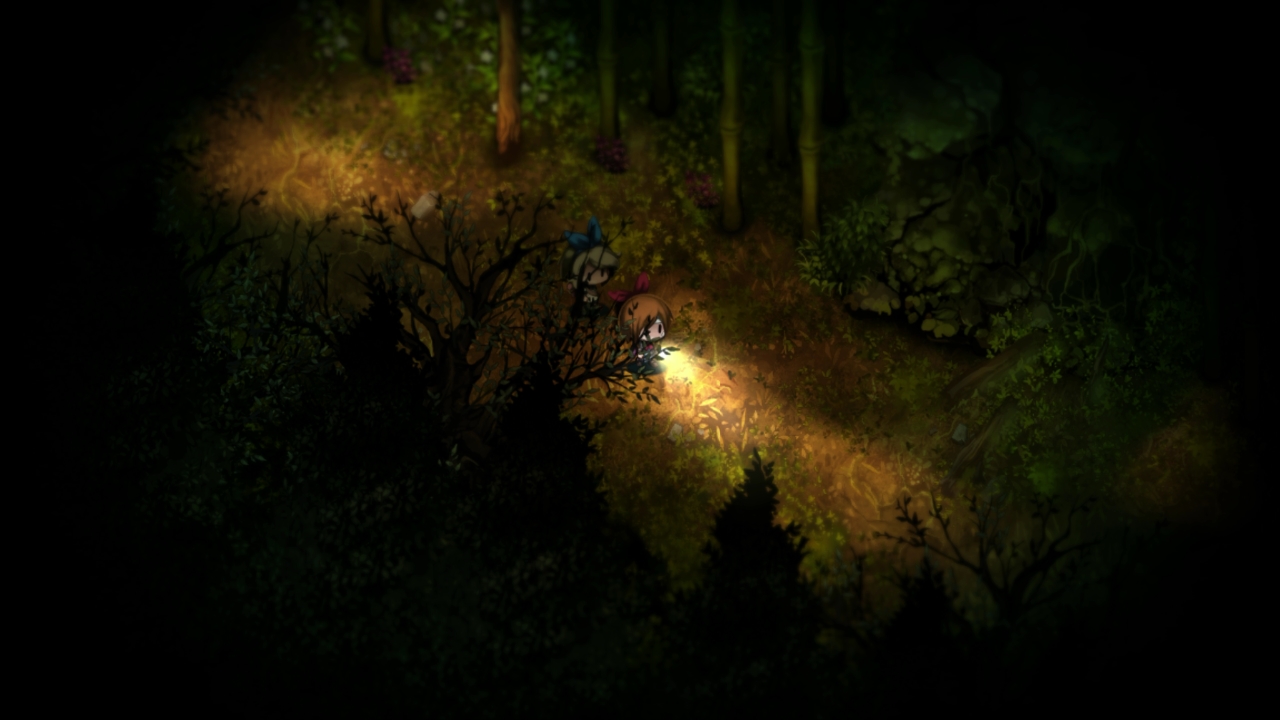
Shadows at midnight
The second of the two game bundle, Midnight Shadows, offers much the same gameplay. The controls are very similar, with ‘R’ used to sprint, ‘L’ used to tiptoe and the left analogue stick for movement. Furthermore, the ‘A’ button is used to interact with objects, signified with a question mark or explanation mark appearing above the characters head. There are subtle differences in how the game is presented, with the on-screen text and visuals taking a slightly different approach. These are minor aesthetic changes which do not impact on gameplay, however they do offer the feeling that this is a game released sometime later and feels like a sequel should.
The backstory to this one is just as mysterious as ‘Night Alone’, with two girls going to watch the fireworks in the local town. When they look to return home, they get lost en route. They hold hands to provide some comfort however when they let go, they become separated. Over the course of the game, you get to play as both characters, with the actions you complete as one having a direct impact on the storyline of the other. An excellent addition and one which shows the clear progression from the first game to the second.
As I wanted to try both games before reviewing Yowamari, I had started both games in quick succession. It was, therefore, easier to spot that there are some elements almost too similar in design. For example, in the first game, you go looking for your sister because she has stayed away too long. In the second, one of the main protagonists goes to find the other as they have been gone too long. It seemed a shame to not find something more inventive, even if both story lines do work in their own right.
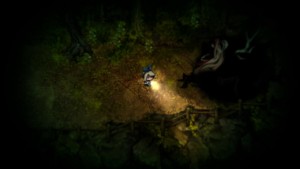
In conclusion…
This repetitiveness and lack of invention from one game to the next brings me very neatly on to my summary. For all its charm, jump scares and understated soundtrack, Yomawari: The Long Night Collection can become repetitive. Coupled with the somewhat frustrating unpredictability of some enemy encounters, often resulting in trial and error tactics to avoid them, it can lead to an experience which becomes a little old a little too quickly. After my first impressions were so positive, I had hoped for more.
That isn’t to say I didn’t enjoy the collection, as that would be too far from the truth. The puzzle elements, art style and lack of soundtrack make for excellent foundations for a survival horror. It could have been built upon to make a true classic survival horror, however it just misses the mark.
3.5/5





Buy Yomawari: The Long Night Collection for $39.99
Follow Nippon Ichi Software, Inc

[Review] Backpack Hero – Nintendo Switch

Developed By: Jaspel Published By: Different Tales Category: Role-Playing, Simulation…

